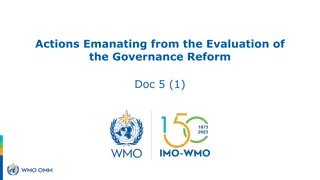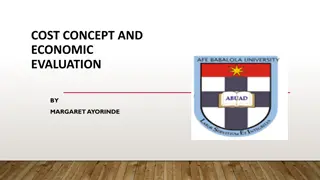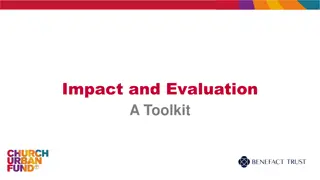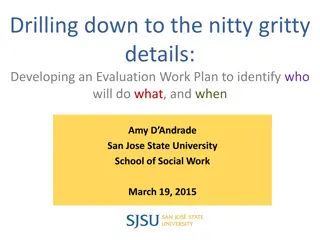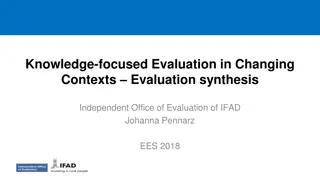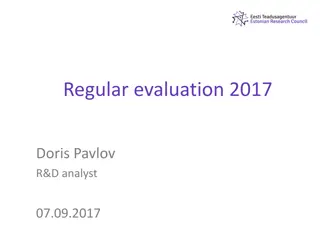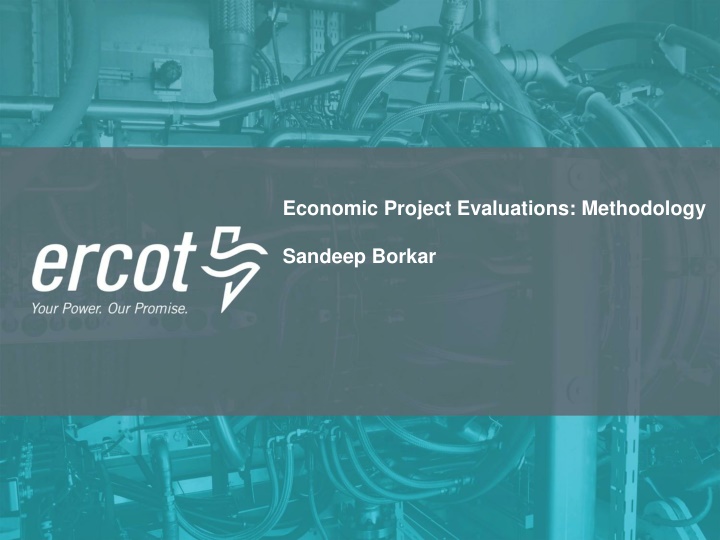
Economic Project Evaluations Methodology and NPV Basics
Learn about the methodology for evaluating economic projects, focusing on net present value (NPV) basics. Understand how to assess societal benefits, compare project alternatives, and calculate NPV for transmission investments over time.
Download Presentation

Please find below an Image/Link to download the presentation.
The content on the website is provided AS IS for your information and personal use only. It may not be sold, licensed, or shared on other websites without obtaining consent from the author. If you encounter any issues during the download, it is possible that the publisher has removed the file from their server.
You are allowed to download the files provided on this website for personal or commercial use, subject to the condition that they are used lawfully. All files are the property of their respective owners.
The content on the website is provided AS IS for your information and personal use only. It may not be sold, licensed, or shared on other websites without obtaining consent from the author.
E N D
Presentation Transcript
Economic Project Evaluations: Methodology Sandeep Borkar
Agenda Why we re discussing this NPV Basics Discussion Note of caution: This discussion is limited to selecting between multiple project alternatives that have met the economic planning criteria. This discussion is NOT about the criteria to used to determine if a project is economic. PUBLIC 2
Protocol 3.11.2(4) For economic projects, the net economic benefit of a proposed project, or set of projects, will be assessed over the project s life based on the net societal benefit that is reasonably expected to accrue from the project. The project will be recommended if it is reasonably expected to result in positive net societal benefits. PUBLIC 3
Reason For Discussion An economic project evaluation methodology should: Take a societal point of view (consistent with PUCT rules and Protocols) Include all relevant costs and benefits associated with the project Transmission assets expect to provide benefits to the system over the entire life of the asset (30 years depreciated life and more) Society incurs costs which go beyond the initial capital cost Net Present Value (NPV) is commonly used for such applications PUBLIC 4
Why Not to Consider Only Savings:Cost Ratio Example: Comparison of two mutually exclusive projects Net Benefit $19M $999 Project A: Cost = $1 PC Savings = $1,000 Savings:Cost Ratio = 1,000 Net Benefit = $999 Project B: Cost = $1,000,000 PC Savings = $20,000,000 Savings:Cost Ratio = 20 Net Benefit = $19,000,000 PUBLIC 5
NPV Basics Net present value (NPV) is the difference between the present value of relevant cash inflows and outflows over a period of time. NPV is used in capital budgeting to analyze the profitability of a projected investment or project. ? ?? ??? = ?? + ? + ?? ?=? Ct = net cash inflow during the period t C0 = total initial investment costs r = discount rate t = number of time periods PUBLIC 6
NPV Basics Transmission Investment ? ?? ??? = ?? + ? + ?? ?=? Ct = net cash inflow during the period t ?????? ?????????? ???? ?????? ?????? ???????? ???? C0 = total initial investment costs None Investment rate - inflation r = discount rate t = number of time periods 30 years assumed depreciated life PUBLIC 7
Discussion Application of the assumptions in the previous slide to transmission investment decisions (when deciding between multiple projects) Since the NPV is a product of set financial assumptions we can use a generic NPV multiplier applied to estimated project cost What discount rate should be used to discount: Production cost savings? [Alternatively, don t discount PC savings calculate/ interpolate from LTSA] Annual carrying costs? PUBLIC 8
Questions and Comments Please send comments to Sandeep Borkar. Sandeep.Borkar@ercot.com PUBLIC 9
Appendix PUBLIC 10
Annual Carrying Cost of a Transmission Project For a sample TDSP Capital cost of the project (the price to a TO) Return on Rate Base Cost of debt Cost of equity Taxes Incremental Operations and Maintenance expenses (O&M) Item Year 1 Return on Rate Base $ 19,509 Depreciation $ 8,798 Fixed O&M $ - Variable O&M $ 2,601 Ad Valorem Tax $ 2,621 Federal Income Tax $ 1,112 Annual Revenue Req $ 34,641 $ 250,000 Capital Cost $ 554,410 PV of Total Revenue Req PV of Total Revenue Req (ignoring taxes) $ 440,324 PUBLIC 11
Revenue requirement snapshot for first three years 1 2 3 Year (index) 2022 2023 2024 Year $ 19,509.40 $ 18,987.86 $ 18,333.11 Return on Rate Base 8797.50 8797.50 8797.50 Depreciation 0.00 0.00 0.00 Fixed O&M 2601.00 2653.02 2706.08 Var O&M 2621.35 2551.28 2463.30 Property Taxes 1112.21 787.99 982.12 FIT $ 34,641.46 $ 33,777.65 $ 33,282.11 Total Revenue Requirement $ 30,907.90 $ 30,438.38 $ 29,836.69 Total Revenue Requirement (w/o Taxes) Sample capital cost of project : $250M All $$ expressed in Thousands SL depreciation over 30 years FIT determined at 21% and 1% O&M is assumed PUBLIC 12

